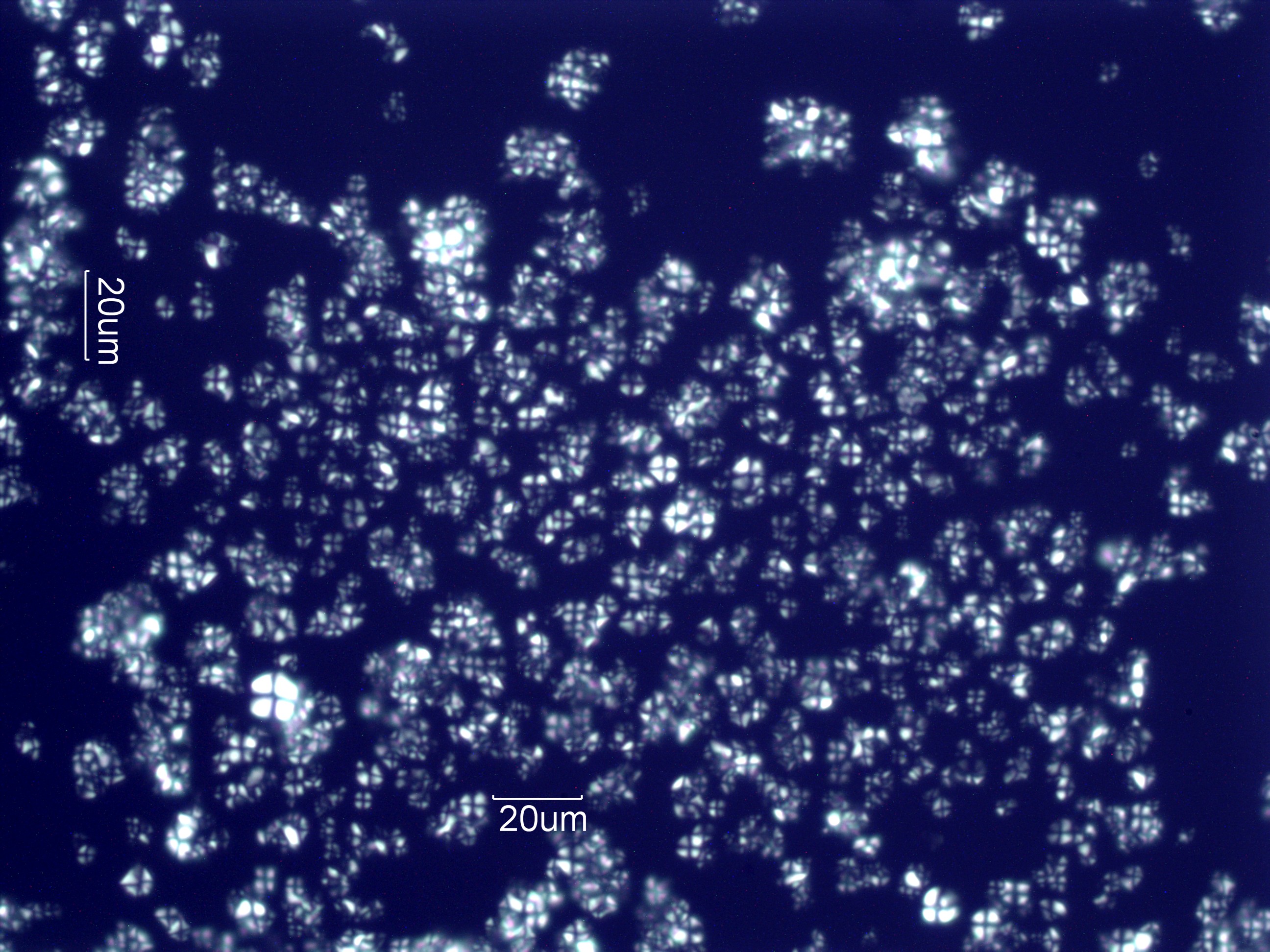Rice Starch
This image includes clusters of rice starch grains viewed with crossed linear polarized filters. The typical cross pattern characteristic of all spherulitic particles can be seen in these small grains
Transmitted Crossed Linear Polarized Light
Martin, E.A., Dictionary of Life Sciences, 2nd ed., Pica Press
Definition/Function:
Rice starch is derived from Oryza sativa. it is a common starch but much less common than corn starch.
Starch grains are are a means for plants to store energy. They are produced by a wide variety of plants and are a mixture of alpha-amylose and amylopectin. Starch grain differ in their size, their shape, and the structure of the center vacuole. Many of these differences are useful for the identification of the plant of origin for the starch grain.
Significance in the Environment:
Starch is common in the indoor environment. It is widely used as a body powder, a carrier for fragrances, for insecticides, for mold-release, and many other applications. Surgical gloves must be free of rice starch because rice starch inside the body cavity can cause infection. Past uses of rice starch as a mold-release agent in surgical glove manufacture resulted in the death or severe debilitation of the patient.Characteristic Features:
Rice starch tends to be polyhedral in shape and generally 3 to 15 micrometers in diameter. The center vacuole tends to be a very small circle. Rice grains tend to clump in groups of a few to over a hundred in an ovaloid cluster.Associated Particles:
References:
http://en.wikipedia.org/wiki/StarchMartin, E.A., Dictionary of Life Sciences, 2nd ed., Pica Press


